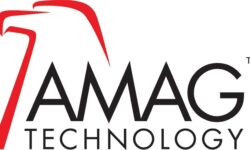What to Expect When You’re Inspecting
Offering fire system inspections and compliance assurance not only elevates safety but delivers contractors a host of benefits. They include: increasing customer retention; uncovering upsell opportunities; making cash flow predictable and the business appealing to creditors/investors; reducing false alarms and ingratiating first responders; and increasing the enterprise’s long-term value.

All photos courtesy SimplexGrinnell
It is critical that installing contractors help end users meet safety standards and go beyond the norm to apply best practices and advanced technologies that can enhance safety and improve the efficiency and effectiveness of fire/life-safety system inspection, testing and maintenance (ITM). Doing so also offers contractors a means to add more value to their portfolios that fuels business growth and opens up steady revenues streams.
Proper ITM helps keep life-safety systems in top working order so they are ready to perform if and when needed. The objective is to ensure installed equipment is operating as designed and that appropriate ITM fire protection codes, standards and requirements are being met, particularly in commercial, institutional and industrial settings. The types of systems subject to regular inspections and tests include fire alarm systems, fire sprinkler systems, fire extinguishers, kitchen/range hood systems, special hazards suppression systems and emergency lighting.
A number of issues, factors and considerations influence the performance of inspection and testing services. It is important that inspectors have a thorough understanding of codes, standards and ITM requirements that apply in a particular jurisdiction — and how they may affect the inspection process. Codes and standards prescribe the inspection, testing and maintenance requirements, including the frequency of inspections, that need to be met for various systems.
Putting Procedures in Place
For the most part, inspections of fire and life-safety systems follow straightforward, traditional procedures:
- Scheduling or arranging the inspection with the building owner, facility manager, fire marshal or other appropriate person
- Notifying the building owner/operator, as well as the system monitoring company, upon arrival for the inspection
- Visually checking to see that all items meet applicable NFPA and local codes
- Providing code-required functional testing
- Repairing/correcting system deficiencies that can be immediately addressed and are authorized by the owner/facility manager
- Reviewing all pass/fail final results with the customer
- Recording the status of all tested systems, whether in good working order or a deficiency in need of repair
- Providing a quote for the repairs of deficiencies that cannot be immediately addressed
- Providing appropriate documentation of the inspection and the results
- Once any deficiencies identified during the inspection have been repaired, that documentation should be stored with the original inspection report
The training and experience of fire and life-safety system inspectors will invariably impact the inspection process. Also, different types of occupancies may have different requirements. The processes or products used in a building may also require different systems or protection that must adhere to additional code requirements. This is where the experience level of inspectors can become a critical factor. And while these inspections may at times seem disruptive, they can help keep the property safe and offer tremendous long-term benefits for building/business owners.
Several System Types to Target
Traditional fire and life-safety system inspections address a wide array of systems:
Fire Alarm Systems — Even seemingly insignificant alarm problems, if there are such things, need to be identified and resolved to help see that people and property are not placed at risk. Scheduled testing, inspection and preventive maintenance are especially important with fire alarm systems in order to help keep all components (control panels, detectors, notification appliances and annunciators) in good working order and ready for an emergency.
The inspection work includes, but is not limited to: checking site conditions; sensitivity settings; testing and calibrating alarm sensors; simulating inputs; inspecting and metering batteries; inspecting flow and tamper switches; and verifying the viability of all signals. Inspection, testing and maintenance requirements for fire alarm systems are contained in NFPA 72: National Fire Alarm and Signaling Code.
If you enjoyed this article and want to receive more valuable industry content like this, click here to sign up for our FREE digital newsletters!

Security Is Our Business, Too
For professionals who recommend, buy and install all types of electronic security equipment, a free subscription to Commercial Integrator + Security Sales & Integration is like having a consultant on call. You’ll find an ideal balance of technology and business coverage, with installation tips and techniques for products and updates on how to add to your bottom line.
A FREE subscription to the top resource for security and integration industry will prove to be invaluable.







